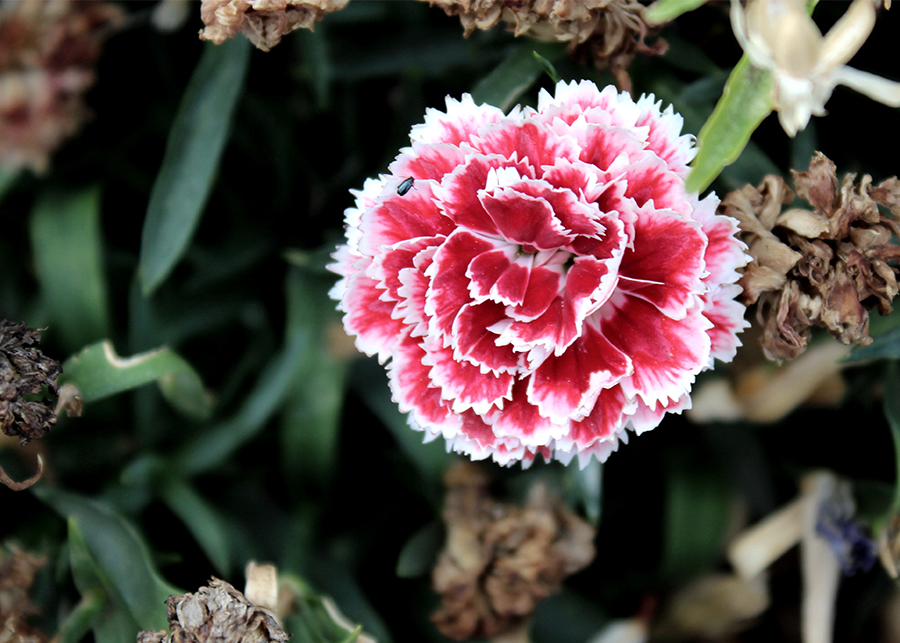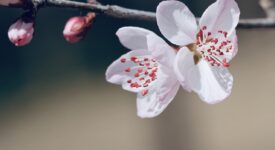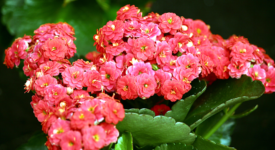Carnations have been around for a long time, and they have played an important role in history. In fact, the carnation flower is one of the most significant flowers in history. Because of its rich history, the carnation is inextricably linked to symbolism that people often take great care to pay attention to. Read on to learn about the different ways that people have used these flowers throughout history!
Have you ever given a carnation flower to someone? If so, you were participating in a tradition that dates back more than 2,000 years. It has been around for a long time, and it has played an important role in history. In this blog post, we’ll discuss the significance of the carnation flower and explore some of its symbolism. We’ll also take a look at some of the different ways that people have used those flowers throughout history. So read on to learn more about this significant flower!
What Is a Carnation?
Carnation is an annual flowering plant belonging to the family Asteraceae. It is a native of the Mediterranean region but has been naturalized in many parts of the world. The plant grows up to 1 meter tall, with branching stems and lance-shaped leaves. The flowers are usually red, pink, or white, and are produced in large heads.
Carnation flowers are used for both fresh and dried arrangements. They can also be candied or made into a preserve. Theyare often used as a filler flower in bouquets and arrangements.
The Latin word coron-ae, meaning “wreath, garland, chaplet, crown,” is said to have given rise to the name carnation since it was one of the blooms adorning Greek and Roman ceremonial crowns. The word carnation comes from the Latin caro, “flesh,” which refers to the natural color of the flower or in Christian iconography incarnatio, “incarnation,” God made flesh as Jesus.
The leaves of Dianthus caryophyllus, which grows up to 80 cm tall, are glaucous greyish green to blue-green and slender. The flowers are single or grouped together in a cyme and range in size from 3 to 5 cm; they are fragrant, with a diameter of 3–5cm, and vivid pinkish-purple in color; cultivars of other colors, including red, white, yellow, blue, and green have also been developed. The fragrant, hermaphrodite blooms have a radial structure. The egg-shaped sting-pointed scales leaves surrounding the calyx are only ¼ as long as the tube itself.
The wild carnation is native to Croatia, Albania, Greece, Italy, and Spain’s Mediterranean nations.

Cultivation of Carnation and Its Usage:
It is a flower that is cultivated for its flowers. The flowers are used for making floral arrangements and bouquets. They can be red, white, pink, or purple in color. The flowers are also used to make perfume.
The carnation flower is native to the Mediterranean region. The flowers are now grown all over the world. They are commercially grown in Holland, France, Italy, and the United States. California is the largest producer in the United States.
Commercial cultivation of them begins with the propagation of plants from cuttings. Cuttings are taken from a healthy plant and placed in soil or water to grow into new plants. New plants are then transplanted.
Carnations are most commonly used as a boutonniere for men’s formal wear. They were used for vinegar, beer, wine, sauces and salads in the past.
They can also be used in flower arrangements and as potpourri. The petals can be dried and used in tea, or made into a jam.
Carnation: A Significant Flower in History Result
A carnation is a flower of the , which constitute the family (Caryophyllaceae). The 25-30 species occur as herbs, shrubs, or undershrubs. They are almost always aromatic and have a high percentage of , making them one of the plants most attractive to pollinating insects. Carnations are usually pinks or reds, but the tricolor form in white, pink and red or ruffled versions in those colors. Other colors may be found in modern cultivated varieties, such as yellow. The leaves are alternate, often glaucous grey or silvery green on the lower surface, and ligulate.
Carnation Flower Symbolism
Carnation flowers, known for their ruffled petals and wide range of colors, carry different meanings and symbolisms. Here are some key points about the symbolism of carnation flowers:
– Carnations in general symbolize love, devotion, distinction, and fascination.
– They play an essential role in various cultures worldwide. For instance, carnations are associated with Mother’s Day and are the official flowers for 1st Wedding Anniversaries.
– In Korea, Carnations are worn on Parents’ Day and Teachers’ Day.
– They are often used in wedding bouquets and almost any kind of flower arrangement.
The color of the carnation can also affect its symbolism:
– Red Carnations: These symbolize passionate love and unwavering devotion.
– Pink Carnations: They signify gratitude and are the official flower for Mother’s Day.
– Yellow Carnations: They represent remorse or disappointment.
– White Carnations: These flowers symbolize pure love, good luck, and are often associated with innocence. They are also considered as flowers that mean loyalty. They are frequently utilized at ceremonies such as baptisms and weddings. White carnations are worn in the Netherlands to honor veterans and to remember how the country fought back during World War II. They’re a common choice for funerals because they are the traditional white flower symbolizing profound sorrow and mourning.
Carnation flowers, known for their ruffled petals and variety of colors, carry a wealth of symbolism. They generally represent love, fascination, and distinction. The color of the carnation can add additional meaning. For example, white carnations often symbolize pure love and loyalty. For more detailed information about the symbolism of carnation flowers and many others, you can visit this website (https://allwaysflower.com/flowers-that-symbolize-loyalty/). It provides a wealth of information about the meanings and symbolisms of various flowers. Enjoy exploring the world of flowers!
F.A.Q
What is the significance of carnation flower?
A yellow carnation is given to someone who you have rejected or dislike. White carnations are given to friends and family to express a message of love and purity. They may also be used during holidays such as Mother’s Day. A pink carnation means romance and affection, while red ones mean passion and desire. If a flower has stripes on it, the colors of the stripes will determine their meaning.
What is the history of carnations?
Carnations are among the oldest cultivated flowers in existence, with a vast history that reaches far beyond what we see today. Their use dates back to as early as 2,000 years ago and have been valued for more than mere decoration. Some people may use them to convey their feelings towards someone they care deeply about. Others may display them to remember a loved one. In any case, carnations hold a certain significance and relevance within our culture and society that has forged a permanent place for them in our hearts.







